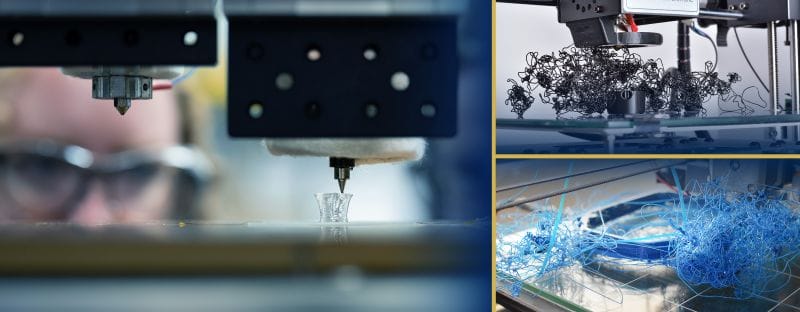RSS feed source: National Science Foundation
Using the Gemini North telescope in Hawaii, astronomers have captured an image of comet 3I/ATLAS, an interstellar object that was first detected on July 1, 2025, by the Asteroid Terrestrial-impact Last Alert System (ATLAS) for which the comet was named. The letter “I” means “interstellar,” and “3” indicates it is only the third object from another star system ever observed. The observations will help scientists study the characteristics of this rare object’s origin, orbit and composition.
Gemini North is in Hawaii and is one half of the International Gemini Observatory, funded in part by the U.S. National Science Foundation. The imagery reveals the comet’s compact coma — a cloud of gas and dust surrounding its icy nucleus.
“The sensitivity and scheduling agility of the International Gemini Observatory has provided critical early characterization of this interstellar wanderer,” says Martin Still, NSF program director for the International Gemini Observatory. “We look forward to a bounty of new data and insights as this object warms itself on sunlight before continuing its cold, dark journey between the stars.”
RSS feed source: National Science Foundation
Seneca County, N.Y. – FEMA is proposing updates to the Flood Insurance Rate Map (FIRM) for Seneca County, New York. Community partners are invited to participate in a 90-day appeal and comment period.
The updated maps were produced in coordination with local, state and FEMA officials. Significant community review of the maps has already taken place, but before the maps become final, community partners can identify any corrections or questions about the information provided and submit appeals or comments.
The 90-day appeal period will begin July 23, 2025. Residents, business owners and other community partners are encouraged to review the updated maps to learn about local flood risks and potential future flood insurance requirements. They may submit an appeal if they perceive that modeling or data used to create the map is technically or scientifically incorrect.
An appeal must include technical information, such as hydraulic or hydrologic data, to support the claim.Appeals cannot be based on the effects of proposed projects or projects started after the study is in progress.If property owners see incorrect information that does not change the flood hazard information—such as a missing or misspelled road name in the Special Flood Hazard Area or an incorrect corporate boundary—they can submit a written comment.
The next step in the mapping process is the resolution of all comments and appeals. Once they are resolved, FEMA
Click this link to continue reading the article on the source website.
RSS feed source: National Science Foundation
DENVER – This afternoon FEMA authorized the use of federal funds to help with firefighting costs for the Monroe Fire burning in Sevier County, Utah. The fire started July 13, 2025 and is 0-percent contained.
Acting FEMA Region 8 Administrator Katherine Fox approved the state’s request for a federal Fire Management Assistance Grant (FMAG) this afternoon after determining the fire threatened such destruction that it would constitute a major disaster.
At the time of the request, the fire had burned 8000 acres and was threatening critical infrastructure including essential communications as well as the local watershed. There are also several other large fires burning uncontrolled within the state of Utah and fire weather conditions remain a concern.
The authorization makes FEMA funding available to pay 75 percent of the state’s eligible firefighting costs under an approved grant for managing, mitigating and controlling designated fires. These grants do not provide assistance to individual home or business owners and do not cover other infrastructure damage caused by the fire.
Fire Management Assistance Grants are provided through the President’s Disaster Relief Fund and are made available by FEMA to assist in fighting fires that threaten to cause a major disaster. Eligible items can include expenses for field camps; equipment use, repair and replacement; mobilization and demobilization activities; and tools, materials and supplies.
For more information on FMAGs, visit https://www.fema.gov/fire-management-assistance-grants-program-details.
Click this link to continue reading the article on the source website.
RSS feed source: National Science Foundation
Artificial intelligence has transformed fields like medicine and finance, but it hasn’t gained much traction in manufacturing. Factories present a different challenge for AI: They are structured, fast-paced environments that rely on precision and critical timing. Success requires more than powerful algorithms; it demands deep, real-time understanding of complex systems, equipment and workflow. A new AI model designed specifically for manufacturing, seeks to address this challenge and revolutionize how factories operate.
With support from the U.S. National Science Foundation, a team led by California State University Northridge’s Autonomy Research Center for STEAHM has developed MaVila — short for Manufacturing, Vision and Language — an intelligent assistant that combines image analysis and natural language processing to help manufacturers detect problems, suggest improvements and communicate with machines in real time. Their goal is to create smarter, more adaptive manufacturing systems that can better support one of the most important sectors of the U.S. economy.
MaVila takes a different approach. Instead of relying on outside data, like information on the internet, it is trained with manufacturing-specific knowledge from the start. It learns directly from visual and language-based data in factory settings. The tool can “see” and “talk” — analyzing images of parts, describing defects in plain language, suggesting fixes and even communicating with machines to carry out automatic adjustments.
MaVila was trained using a specialized approach that required
Click this link to continue reading the article on the source website.


